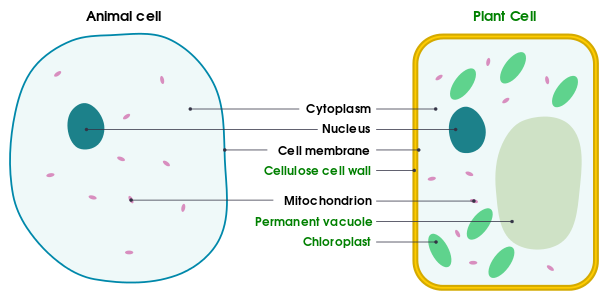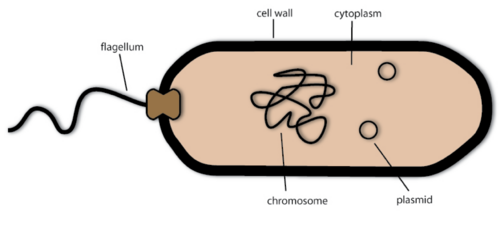Cells are the most basic units of living organisms and they allow the processes of life to take place. Humans, Venus fly traps and E-Coli all have cells and they aim to perform similar functions. The most basic function of a cell is to provide the raw material to build entire organisms and of course, this means that cells come in all shapes and sizes.
Cells - Animals, Plants and Bacteria Explained
What are cells?
What do cells do?
Cells allow us to build our bodies, provide them with energy and house the DNA which holds the plans and could be called the brain of the operation. For GCSE, you need to know the names of the main subcellular structures, their roles in cells and what kinds of organisms you find them in. This means knowing whether plants, animals and bacteria have each structure in their cells, which links to the topic of classification and of course, microscopy. There is also the issue of specialised cells, but for now, we will consider the main kinds of subcellular structures.
Types of subcellular structures.
- Nucleus – Control centre of the cell (contains the DNA)
- Ribosomes – Sites of protein synthesis (where proteins are made from the instructions inside DNA)
- Cell wall – Provides strength against stretching and pressure due to osmosis
- Cell membrane – Semipermeable layer controlling materials entering and exiting the cell
- Vacuole – A sap-filled sac storing nutrients
- Cytoplasm – A jelly-like substance where cell reactions take place
- Mitochondria – Sometimes called the powerhouses of cells (where cellular respiration takes place)
- Chloroplasts – Contains chlorophyll and is where photosynthesis takes place
The image below shows where each of the above structures can be found. Ribosomes are found in both animal and plant cells although they are not pictured in the image below

Bacterial Cells and how they differ from animal and plant cells.
Bacterial cells are quite different from animal and plant cells, but their lack of a nucleus is the most pronounced difference. Bacteria are prokaryotes, meaning they lack a membrane-bound nucleus although they still have DNA, just arranged in a loop, often called chromosomal DNA or just a chromosome.

Bacterial cells also have another form of DNA which are called plasmids or plasmid DNA. This kind of DNA often contains additional genes which provide adaptations such as antibiotic resistance. Humans have used plasmids to carry out genetic engineering since they can be taken out and altered or transferred into different organisms.
Cell walls present in bacteria are not made from cellulose as in plants, instead, they are made of peptidoglycan. Some bacteria use a flagellum (tail) to help them move around and avoid danger or go to food.
Check out our quiz on Cells and Subcellular Structures to see how much you’ve learned!
